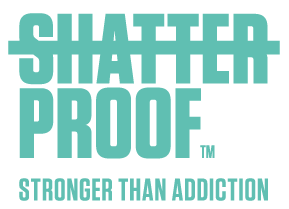Shatterproof’s new Addiction Stigma Index harnesses data to provide a road map to better policies and better treatment
By Jason Langendorf
Imagine a phenomenon that contributes to tens of thousands of preventable deaths annually, as well as the ongoing suffering of millions more and a public financial toll amounting to hundreds of billions of dollars each year. We’d waste no time addressing this problem, right?
That’s the hope behind the recently released Addiction Stigma Index, a sweeping survey that attempts to measure stigma by assessing attitudes about substance use and people who use substances. Created by Shatterproof in conjunction with The Hartford financial services and insurance company and Indiana University, the index attempts to bring a focus to one of the more insidious obstacles to treatment and recovery success.

“We believe the lack of measurement around stigma has made it extremely difficult to reduce and track and monitor,” says Matthew Stefanko, director of Shatterproof’s National Stigma Initiative. “Because of that, we were able to work with a lot of leading researchers in the space to develop the index. We think it’s going to be one of the most important tools that our country has in addressing stigma and ultimately ensuring that we are confronting this critical driver of the addiction crisis as effectively as possible.”
What the Index Tracks
Shatterproof has identified four types of addiction stigma as priorities: public, structural, self and stigma against medication-assisted treatment (MAT) for opioid use disorder. In its survey of nearly 8,000 U.S. residents, the organization relied on more than 50 validated stigma measures that factor in these priorities. A small sample of the survey’s key findings:
- 75.2% of the public do not believe that a person with an SUD is experiencing a chronic medical illness, as are those with diabetes, arthritis or heart disease
- 65.4% of respondents indicated that they would not want someone with a substance use disorder (SUD) marrying into their family
- 46.1% of respondents with an opioid use disorder expressed feeling ashamed of themselves
The manifestation of stigma can range from soft prejudice to employment discrimination to the underprescription and over-restriction of MAT, and its effects are often dynamic. Not only does structural stigma limit resources and influence policy, but people with SUD also are prone to internalize negative stereotypes, which can lead to the sort of isolation that perpetuates addiction.
“Most other measurement tools look at one of those pictures at a time,” Stefanko says. “They might look at how healthcare professionals feel about someone with a substance use disorder. They might try to understand how the public feels, but they’re not putting together this complete picture that we believe we can, because of the expansiveness of this tool.”
How the Index Can Be Used
Caregivers and researchers in the addiction treatment space often point to stigma as a barrier for people with SUD, and much of the public—although some of it still unconvinced—has come to understand the harm of stigma in a theoretical sense. But Shatterproof’s Stigma Index helps spell out, plainly and precisely, how stigma hampers access to treatment and jeopardizes recovery.
It’s something that we can utilize when we go to federal policymakers and legislators, and have conversations with them about both the importance of stigma and also how little progress we’ve made. We’ve never been able to do that.”
—Mark Stefanko, Shatterproof
Stefanko acknowledges the benefit of bringing a more concrete understanding to a nuanced subject, and he says Shatterproof is actively seeking organizations to partner with—“folks that might be interested in using this in their own backyard.” But one result from the survey, he emphasizes, has value over all others: data. Because Shatterproof will be conducting research for the index over a multiyear period, its initial findings have been vital in establishing a baseline from which progress can be tracked and measured.
“It’s something that we can utilize when we go to federal policymakers and legislators, and have conversations with them about both the importance of stigma and also how little progress we’ve made,” Stefanko says. “We’ve never been able to do that.”
“So there have been tens of millions of dollars spent on media campaigns, communications efforts and training, and it’s hard to know what kinds of changes we’ve been able to make in the country over the last few years. We could have been moving in the right direction or we could have not—and there was no data to give us an indication of the progress, or lack thereof, in one place. We’ll derive a lot of benefits from this.”
Photo: Anne Nygård














